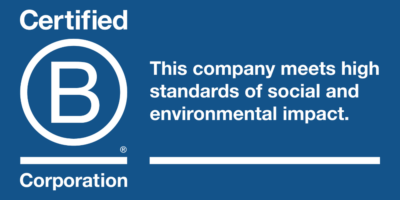At 170 years old, glass maker and materials science innovator Corning epitomizes the word sustainability – while the company published its first formal Sustainability Report in 2021, it has been putting sustainability into practice since 1851. Corning has an extensive history of applying innovation to make the world a better place and find solutions to society’s most cutting-edge problems, leading to its well-deserved reputation as an industry leader that does well while contributing to the good of society.
Bennett Leff, Corning’s Director of Sustainability, joined the company three years ago, having spent the prior three decades leading sustainability efforts and practicing environmental consulting for several other corporations. Corning hired Leff with the intention of formalizing a more holistic approach to its existing sustainability practices.
Leff began by conducting a materiality analysis of social and environmental factors, using its existing EHS (Environmental, Health, Safety) management system to collect data, while engaging with stakeholders to prioritize sustainability goals that mattered to them. This helped Leff and Corning identify the most pressing areas for improvement, such as adding a Corporate Responsibility and Sustainability Committee. Leff recommends any company beginning to explore environmental, social, governance (ESG) ideas should begin with a materiality assessment to provide a base of communication and to determine what steps to take first.
An innovator using business for social good
Importantly, Leff had the advantage of joining a company with a history as an innovator using its business for social good. Corning began inventing solutions for the world’s contemporary needs with the glass used in Thomas Edison’s light bulb. The early 1900s saw the company making glass more durable, which allowed it to be used in TV tubes and space missions. In the 1970s Corning began producing ceramics used in products that allowed for gas particulate matter screening to comply with the Clean Air Act. These types of products are still being produced to reduce automotive emissions and clean the air.
The invention of ultra-transparent glass and a manufacturing platform led to the development of optical fiber that could be laid anywhere, democratizing the availability for broadband communication. And in 2020, Corning dramatically ramped production of its Valor Glass pharmaceutical vials to house COVID vaccines. As an example of how Corning never stops innovating, in 2021, Corning has worked with its customers to optimize Valor Glass vials for faster filling to speed the deployment and delivery of desperately needed vaccines.
Sustainability as an opportunity for Corning
Corning views sustainability as an opportunity, according to Leff. In addition to its constant innovation, Corning recognizes the opportunity to increase efficiency while practicing good environmental stewardship by fostering a circular economy. For example, Corning reuses its scrap glass by crushing it into a substance called cullet, which is then recycled to be used in different glass applications at Corning. This process saves over seventy million pounds of scrap glass from entering landfills each year, while creating a cost-effective material that can be used in other Corning products.
Along the way, Corning has responded to social priorities of the times, as well. In 1983 Corning created Corning Enterprises to spark the economic development of the Corning Valley region of New York, and in 2020 when the local businesses were struggling from the pandemic, Corning provided assistance. In response to recent social and racial unrest, Corning created the Office of Racial Equality and Social Unity (ORESU) and has helped local law enforcement agencies take on police reform efforts. From planting trees in India to aiding hurricane recovery in Mexico, Corning’s’ efforts to make the world a better place extend beyond any one issue or location.
Areas for improvement
For a company as synonymous with sustainability and social good as Corning, it can be difficult for one to imagine areas for improvement. But not for Leff. When asked about the biggest challenge faced by Corning in addressing sustainability, Leff stated that it occurred in areas where less foundational work had been in place. As an example, the Corporate Human Rights Benchmark (CHRB) framework offered an opportunity for Corning to formalize its policies, practices, and reporting regarding human rights.
True to its long history of meeting the challenges of its customers and society, Corning looks forward to using its innovative spirit and sustainable business practices as a force for good.
ESG JOURNEYS: An Ongoing Discussion
Riverwater recognizes that ESG is a journey which never ends. This series features the ESG stories of Riverwater portfolio companies and highlights the particular stages companies find themselves in which often vary based on their size and industry.









